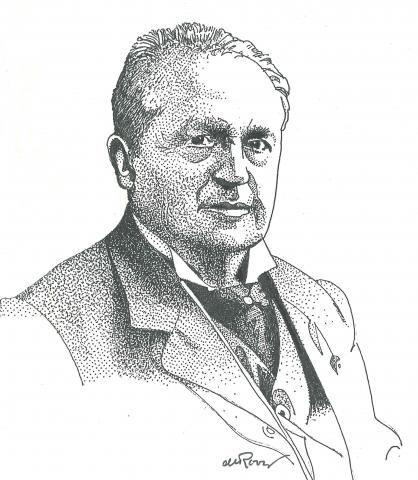A revised and updated version of
Abraham Kuyper: An Annotated Bibliography 1857-2010 by Tjitze Kuipers (2011)
You can buy a printed edition of this book on the site of the publisher.
1898
This translation of portions of the Encyclopaedie der heilige godgeleerdheid was published shortly after Kuyper’s arrival in the United States (see 1898.07). The edition includes fifty-four pages (sections 1–35) from the first volume (see 1894.01)—which deal with the name, the idea, and the concept of “encyclopedia,”—and also the second volume (see 1894.11) in its entirety. The paragraphs are numbered differently because of the juxtaposition of material from the first and second volumes. The translation omits the lengthy historical sections in the first volume and the entire third volume, which deals with the various theological subdisciplines that make up the organism of theology, along with their non-theological supporting disciplines.
In an autobiographical foreword Kuyper explains what moved him to give in “this extensive theological encyclopedia … a concentric exposition of the nature of theology.” The translator, Rev. J.H. De Vries, suggested that Kuyper write a new preface. He also wrote him to let him know that the publisher was prepared to publish the edition only if it received a $900 subvention for setting the type (KA 129). In addition to a translator’s note (p. [V]), the translator also added an index of proper names (pp. [681]–683).
According to a letter from the publisher to Rev. De Vries, dated September 9, 1898, the Encyclopedia of Sacred Theology was published on September 10, 1898 (Letterbook Charles Scribner I, FLPU, Dept. of Rare Books and Special Collections). Publisher files in the same archives show that copies (about 150) were still available in 1909. According to Rev. Henry Beets in his preface to 1931.06, the Encyclopedia of Sacred Theology did not find a large readership and “has been a drug [sic] on the market.” Since 1954, however, the book has been republished at least nine times for the American market.
The work was originally (in 1889) set to be translated by Geerhardus Vos. However, progress in the translation work was interrupted no less than three times owing to appointments as a professor of three ssuccessive translators: Vos, Abel H. Huizinga (1859–1905), and Jacob Poppen (1858–1920). Supported by B.B. Warfield, ultimately J. Hendrik De Vries, the fourth translator, completed the rendering into English. Background information concerning the remarkable tribulations the translation endured is provided by Prof. George Harinck in section V of his interesting and elucidating essay that as a Foreword—and a gift—opens this bibliography.


